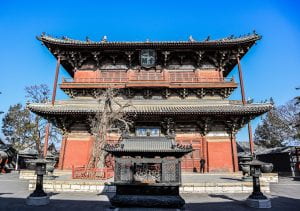The Visual and Material Perspectives on East Asia (VMPEA) workshop is pleased to announce the Spring 2023 schedule. All the in-person events will meet on selected Wednesdays from 4:45 to 6:45 pm CT at Cochrane-Woods Art Center 152 unless otherwise noted. For the online events or those who would like to join us remotely for the in-person events, we will send out the registration link prior to these events. You are welcome to consult the VMPEA website for further information about these events, and please subscribe to our listserv here to receive event notifications.
Spring 2023 Schedule
March 23
Juliane Noth, Professor of East Asian Art History, Freie Universität Berlin
“Debating the Past and the Future of Chinese Art at the Hangzhou National Art School, 1928–1937”
[This event is on Thursday at 4:45–6:45pm]
*This event is co-sponsored by the University of Chicago Center for East Asian Studies with support from a U.S. Department of Education Title VI National Resource Center Grant.
April 7
Wang Zonghui, Visiting PhD Candidate, UChicago
“An Exploration on the spatial composition of the mKhar rdzong Cave in mKhar rtse Valley, mNga’ ris, Tibet”
(西藏阿里卡孜河谷帕尔宗坛城窟图像程序研究)
*This event will be conducted in English.
[This event is on Friday at 4:45–6:45pm]
April 19
Zhiyan Yang, PhD Candidate, Art History, UChicago
“Exhibiting Contemporary Architecture of China: Experiments and Cross-Cultural Dialogues, 1995–2005”
April 26
Alice Casalini, PhD Candidate, Art History, UChicago
“Things that Look Back: the Malleable Space of Gandharan Art”
*This event is co-sponsored by RAVE workshop.
April 28
Wu Hung, Harrie A. Vanderstappen Distinguished Service Professor of Art History and the College, UChicago
“Outdoor Exhibitions in Beijing, 1979”
[This event is on Friday at 4–6pm]
*This event is co-sponsored by APEA workshop.
If you are interested in attending the reception after the workshop, please RSVP.
May 3
Lu Yun-chen, Assistant Professor of History of Art and Architecture, DePaul University
Title TBD
May 17
Sizhao Yi, PhD Candidate, Art History, UChicago
“Material Encounters: Chen Hongshou’s Early Paintings of Objects”
Please feel free to contact Lucien (lesun@uchicago.edu) and Li (jiangli@uchicago.edu) with any questions you might have, and we look forward to seeing many of you at the workshops!
All the best,
Lucien Sun and Li Jiang
VMPEA Coordinators, 2022–2023


 Catalogue for Wildlife: Starting from 1997 Jingzhe Day (1997-1998)
Catalogue for Wildlife: Starting from 1997 Jingzhe Day (1997-1998)